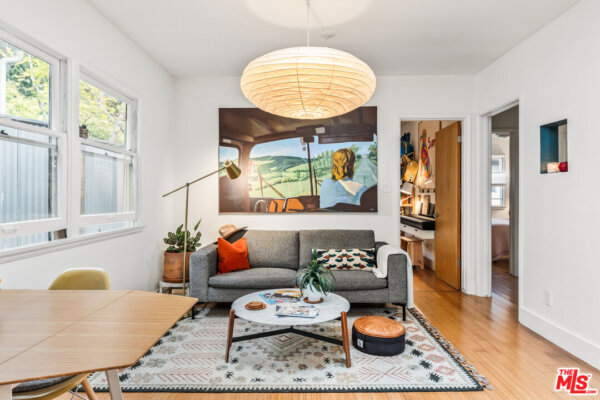Multi-Generational Living: Living With Aging Parents

Living with an aging parent(s) is a huge commitment. While it can strengthen familial bonds, it also comes with its fair share of challenges. For most adults, the need to have an aging parent live with you occurs after your own children have left the house. Some people, however, find themselves “sandwiched” between two generations of dependents: their aging parents need to live with them while their own children are still living at home.
A multi-generational home is a household that has two or more adult generations living together. According to Pew, approximately one-third of all Americans between the ages of 25 and 29 are in a multi-generational living situation.
Benefits of Living in a Multi-generational House
There are many reasons why more and more people are choosing to live in multi-generational arrangements:
- Improved familial bonds
- Higher quality and more accessible care for adults or children
- Improved financial situation: each family member pays fewer bills than they would if they lived independently
- Better physical and mental health for certain members of the family
- The ability for a family member to pursue training or education
Types of Multi-Generational Households
These households come in a variety of sizes and shapes. A few common ones include:
- Three-generational Households: Perhaps the most common type of multi-generational household, this typically comprises one or more working-age adults, one or more children (or adult children), and either aging parents or grandparents.
- Grandfamilies: Grand families have also been rapidly popularizing. These households are spearheaded by an older adult or couple who reside with their grandchildren under 18.
- Two adult generations: Most adult-generation households contain parents and children under 18 to 22. This living arrangement also includes parents moving in with their adult children.
- Four generations Households: This type of multi-generational living is rare and generally found in some lower-income communities. Such households feature parents, adult children, their children, grandparents, and great-grandparents.
Some Tips for Living in a Multi-generational Household
Create Private Spaces and Common Spaces
Common spaces promote a sense of unity, while separate spaces allow each family member to remain private. Create a space with a private entrance or a kitchenette for every family. If you or your partner works from home, you will need a space away from the rest of the family to work without distractions.
For shared spaces, consider building an outdoor patio where all family members can dine together and hang out. You could also consider building an entertainment room with a large screen TV, board games, etc., where everyone can relax and enjoy quality time together.
Keep Your Aging Parents Active
Living alone is great for some aging family members, but not if it means they are withdrawing from a previously active routine. If you are unable to help your parent participate in social, recreational, or religious activities that they used to enjoy before, consider hiring a companion or seeking the help of an organization to lend a hand in this effort.
Understand the Financial Situation
Living with aging parents may bring up new expenses. Estimating what these expenses might look like is a good idea so you can be prepared. Consider the medical assistance they may need (including any home safety modifications or caregiving supplies) as well as additional everyday expenses like food, etc.
Once you have a clear idea of both your and their financial situation, you will know if they have the means to afford the care they need and whether you will have to step in, and to what degree.
Pay Attention to Home Safety
Injuries and falls are common for seniors living at home. For this reason, it is crucial to make your home accessible and safe for elderly parents. While in some cases major structural changes may be necessary, most modifications are simple and require minimal DIY skills . A few simple things you can do to make your space safer include:
- Ensuring all walkways and floors are free of rugs, cords, and clutter
- Adding stair railings and grab bars throughout the house, especially in bathrooms
- Upgrading lighting so the rooms appear bright, and placing light switches in accessible areas
- Making sure all appliances work correctly and are easy to reach
- Eliminating the need to bend down or use step stools
Communicate Feelings and Expectations Clearly
Transparent communication means that every family member can freely express their concerns, complaints, and emotions before they spiral out of control.
Set realistic goals and expectations for each other so everyone can clearly understand what’s required. For example, eating breakfast together every morning or not keeping the TV on loud past 10:00 pm.
You should also discuss what daily chores need to be done, how responsibilities might be divided, and who will pay which bills. If your expectations aren’t being met, communicate your thoughts respectfully and in a timely manner.
Make Means of Communication Easily Accessible
Make sure to have several different means of communication, such as phone, intercom, and text message available for all family members. If your parents are technologically inept, you can pre-program numbers in a simple phone and ask them to always keep it in their pocket. You can also suggest the ideal of a wearable medical alarm that will alert you if needed.
Set Boundaries
Boundaries are important in all types of relationships, and especially when living in a multi-generational household:
- Maintain your right to privacy - you shouldn’t have to answer questions about your personal life, and may want to consider what you ask others
- Schedule and follow through on independent plans
- Make your own decisions without relying on parents’ consent
Final Thoughts
Multi-generational living can be significantly rewarding if you do it right. Not only is it an excellent way to save money, but it also is ideal for looking after aging parents. To make the most of this experience, carefully plan your finances, and set realistic expectations and boundaries beforehand.


